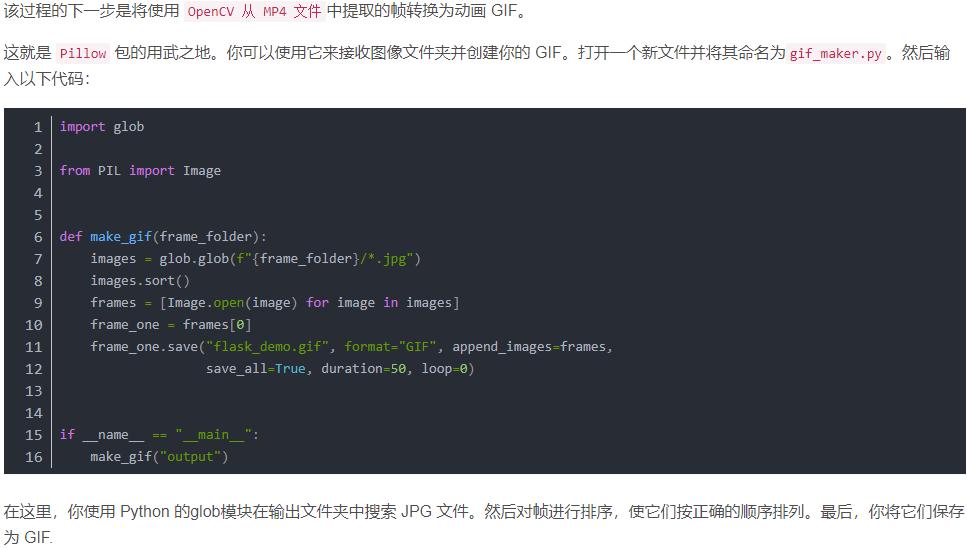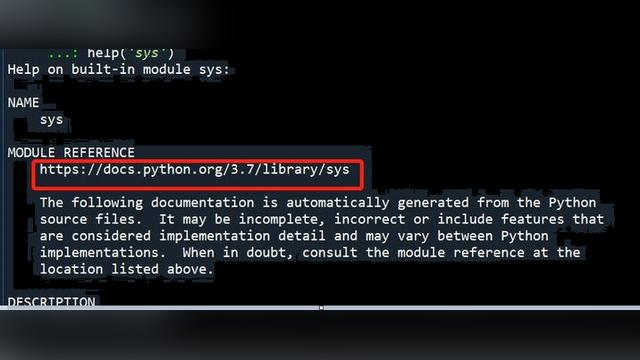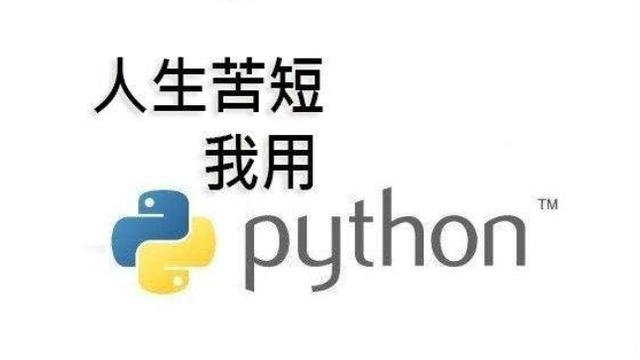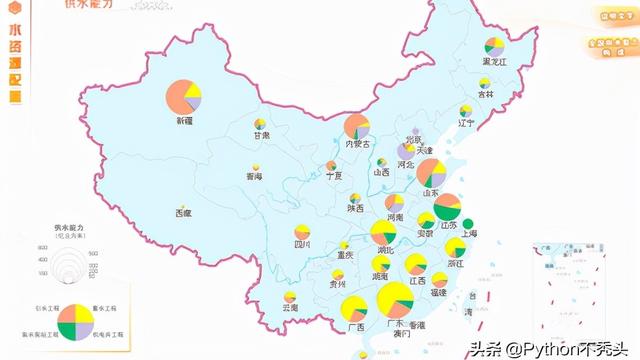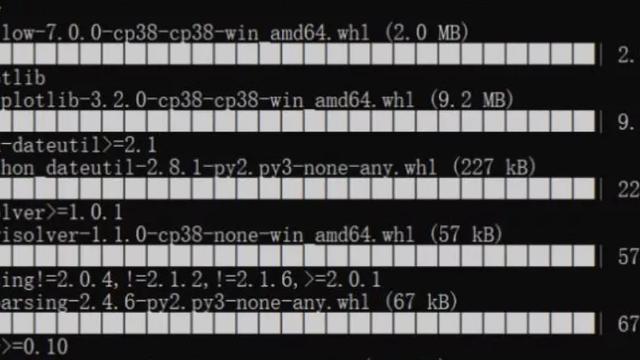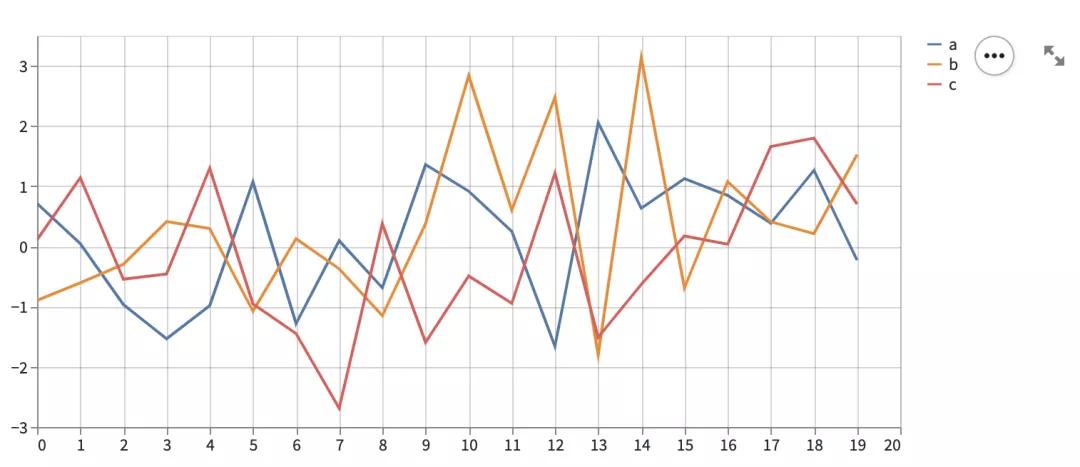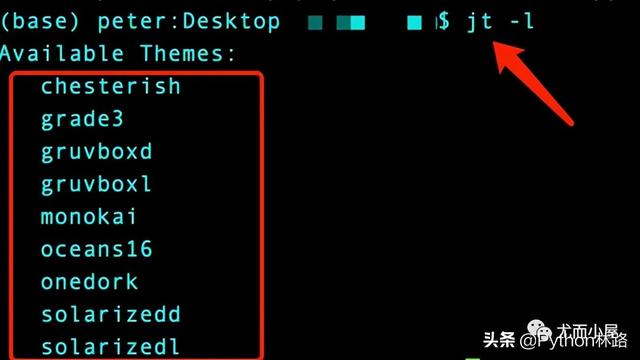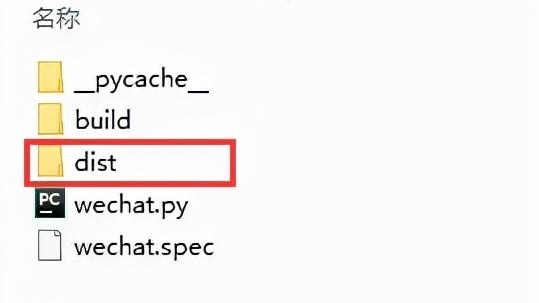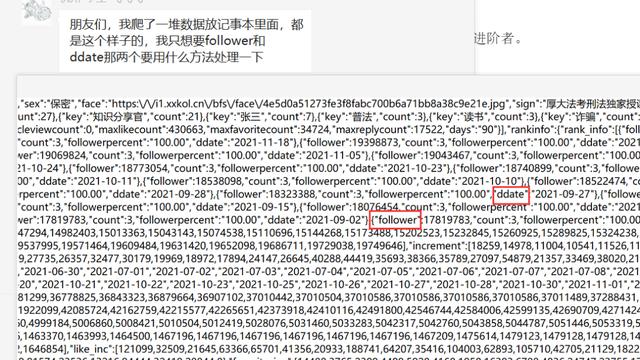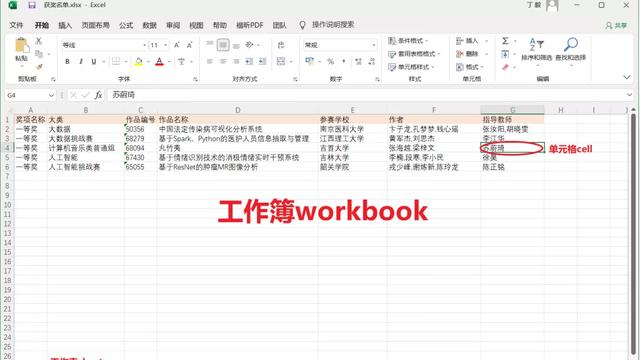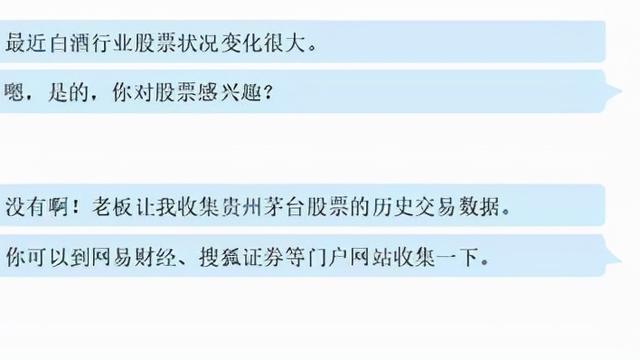Python Pandas 实现 Excel 的灵活操作

示例 Excel 数据
我们以下面Excel 为例,演示Python Pandas Excel操作。

pd.read_excel的主要参数
- io: excel文档路径。
- sheetname : 读取的excel指定的sheet页,若多个则为列表。
- header :设置读取的excel第一行是否作为列名称。
- skiprows:省略指定行数的数据。
- skip_footer:省略从尾部数的int行数据。
- index_col:设置读取的excel第一列是否作为行名称。
- names:设置每列的名称,数组形式参数。
- usecols:读取指定的列, 也可以通过名字或索引值。
读取Excel文件
通过指定表单名的方式来读取,指定列的数据。
import pandas as pd
excel = pd.read_excel('数据爬取-金币涨跌追踪.xlsx',
sheet_name='金币跌涨追踪记录',
usecols=["时间","产品名称","收购比例","收购金额RMB","收购金币数量"])
print(excel)
加载的Excel数据类型为DataFrame,执行上述代码,输出结果为:

普及一 下 DataFrame:
- DataFrame这种列表式的数据结构和Excel工作表非常类似,其设计初衷是将Series的使用场景由一维扩展到多维。DataFrame由按一定顺序的多列数据组成,各列的数据类型可以有所不同(数值、字符串、布尔值)。
- Series对象的Index数组存放有每个元素的标签,而DataFrame对象有所不同,它有两个索引数组。第一个索引数组与行有关,它与Series的索引数组极为相似。 每个标签与标签所在行的所有元素相关联。而第二个数组包含一系列标签,每个标签与一列数据相关联。
- DataFrame还可以理解为一个由Series组成的字典,其中每一列的列名为字典的键,每一个Series作为字典的值。
使用 iloc 从DataFrame中筛选数据
iloc 语法
data.iloc[<row selection>, <column selection>]
iloc 在Pandas中是用来通过数字来选择数据中具体的某些行和列。可以设想每一行都有一个对应的下标(0,1,2,...),通过 iloc 我们可以利用这些下标去选择相应的行数据。同理,对于行也一样,通过这些下标也可以选择相应的列数据。需要注意的是0表示第一行,并不包含表头。
选择单行或单列
选择数据中的第一行
import pandas as pd
excel = pd.read_excel('数据爬取-金币涨跌追踪.xlsx',
sheet_name='金币跌涨追踪记录',
usecols=["时间","产品名称","收购比例","收购金额RMB","收购金币数量"])
# 选择第1行数据
print(excel.iloc[0])
# 执行上述代码,输出结果为:
时间 2020-10-12 20:49:06
产品名称 【拍卖交易】25000万金=362.25元
收购比例 69.01
收购金额RMB 362.25
收购金币数量 25000
Name: 0, dtype: object
Process finished with exit code 0
选择数据中的最后一行
import pandas as pd
excel = pd.read_excel('数据爬取-金币涨跌追踪.xlsx',
sheet_name='金币跌涨追踪记录',
usecols=["时间","产品名称","收购比例","收购金额RMB","收购金币数量"])
# 选择第1行数据
print(excel.iloc[-1])
选择数据中的第一列
import pandas as pd
excel = pd.read_excel('数据爬取-金币涨跌追踪.xlsx',
sheet_name='金币跌涨追踪记录',
usecols=["时间","产品名称","收购比例","收购金额RMB","收购金币数量"])
# 选择第1行数据
print(excel.iloc[:, 0])
# 执行上述代码,输出结果为:
0 2020-10-12 20:49:06
1 2020-10-12 20:42:15
2 2020-10-12 22:26:30
3 2020-10-13 19:48:59
4 2020-10-12 20:55:08
5 2020-10-12 20:53:32
6 2020-10-12 20:58:14
7 2020-10-12 21:00:16
8 2020-10-12 21:57:05
9 2020-10-12 21:56:04
Name: 时间, dtype: object
Process finished with exit code 0
选择数据中的最后一列
import pandas as pd
excel = pd.read_excel('数据爬取-金币涨跌追踪.xlsx',
sheet_name='金币跌涨追踪记录',
usecols=["时间","产品名称","收购比例","收购金额RMB","收购金币数量"])
# 选择第1行数据
print(excel.iloc[:, -1])
行列混合选择
选择数据中的第 1-3 行的所有列
import pandas as pd
excel = pd.read_excel('数据爬取-金币涨跌追踪.xlsx',
sheet_name='金币跌涨追踪记录',
usecols=["时间","产品名称","收购比例","收购金额RMB","收购金币数量"])
# 数据中的第 1-3 行 所有列
print(excel.iloc[0:3])
# 执行上述代码,输出结果为:
时间 产品名称 收购比例 收购金额RMB 收购金币数量
0 2020-10-12 20:49:06 【拍卖交易】25000万金=362.25元 69.01 362.25 25000
1 2020-10-12 20:42:15 【拍卖交易】50000万金=725元 68.97 725.00 50000
2 2020-10-12 22:26:30 【拍卖交易】120000万金=1741.2元 68.92 1741.20 120000
Process finished with exit code 0
选择数据中的前2列的所有行
import pandas as pd
excel = pd.read_excel('数据爬取-金币涨跌追踪.xlsx',
sheet_name='金币跌涨追踪记录',
usecols=["时间","产品名称","收购比例","收购金额RMB","收购金币数量"])
# 选择数据中的前2列的所有行
print(excel.iloc[:, 0:2])
选择第 0, 2, 4行 和 第 1,3 列
import pandas as pd
excel = pd.read_excel('数据爬取-金币涨跌追踪.xlsx',
sheet_name='金币跌涨追踪记录',
usecols=["时间","产品名称","收购比例","收购金额RMB","收购金币数量"])
# 选择第 0, 2, 4行 和 第 1,3 列
print(excel.iloc[[0, 2, 4], [1, 3]])
选择第0-3行 的 0-2列
import pandas as pd
excel = pd.read_excel('数据爬取-金币涨跌追踪.xlsx',
sheet_name='金币跌涨追踪记录',
usecols=["时间","产品名称","收购比例","收购金额RMB","收购金币数量"])
# 选择第0-3行 的 0-2列
print(excel.iloc[0:3, 0:2])
使用iloc只选择了单独的一行或一列,返回的数据为 Series 类型,而如果选择了多行数据则会返回 DataFrame 类型,若只选择了一行,但需要要返回 DataFrame 类型,可以传入一个单值列表,如[1],如下:
import pandas as pd
excel = pd.read_excel('数据爬取-金币涨跌追踪.xlsx',
sheet_name='金币跌涨追踪记录',
usecols=["时间","产品名称","收购比例","收购金额RMB","收购金币数量"])
# 行选择:数据中的第一行
print(excel.iloc[[0] ])
# 列选择: 数据中的第二列
print(excel.iloc[:, [1] ])
使用 loc 从DataFrame中筛选数据
data.loc[<row selection>, <column selection>]
ioc 用于以下两种场景:
- 使用 下标 查找
- 使用 条件 查找
使用 下标 查找
选择数据中的第一行
import pandas as pd
excel = pd.read_excel('数据爬取-金币涨跌追踪.xlsx',
sheet_name='金币跌涨追踪记录',
usecols=["时间","产品名称","收购比例","收购金额RMB","收购金币数量"])
# 数据中的第一行
print(excel.loc[[1]])
选择数据中的前两行
import pandas as pd
excel = pd.read_excel('数据爬取-金币涨跌追踪.xlsx',
sheet_name='金币跌涨追踪记录',
usecols=["时间","产品名称","收购比例","收购金额RMB","收购金币数量"])
# 数据中的第1、第1行
print(excel.loc[[1, 2]])
# 执行上述代码,输出结果为:
时间 产品名称 收购比例 收购金额RMB 收购金币数量
1 2020-10-12 20:42:15 【拍卖交易】50000万金=725元 68.97 725.0 50000
2 2020-10-12 22:26:30 【拍卖交易】120000万金=1741.2元 68.92 1741.2 120000
选择第1到3行的 “时间”、“收购比例” 列
import pandas as pd
excel = pd.read_excel('数据爬取-金币涨跌追踪.xlsx',
sheet_name='金币跌涨追踪记录',
usecols=["时间","产品名称","收购比例","收购金额RMB","收购金币数量"])
# 选择第1到3行的 “时间”、“收购比例” 列
print(excel.loc[1: 3, ['时间','收购比例']])
# 执行上述代码,输出结果为:
时间 收购比例
1 2020-10-12 20:42:15 68.97
2 2020-10-12 22:26:30 68.92
3 2020-10-13 19:48:59 69.23
选择第1、2行的 "时间" 到 "收购比例" 列
import pandas as pd
excel = pd.read_excel('数据爬取-金币涨跌追踪.xlsx',
sheet_name='金币跌涨追踪记录',
usecols=["时间","产品名称","收购比例","收购金额RMB","收购金币数量"])
# 数据中的第1、第1行
print(excel.loc[[1, 2], '时间':'收购比例' ])
# 执行上述代码,输出结果为:
时间 产品名称 收购比例
1 2020-10-12 20:42:15 【拍卖交易】50000万金=725元 68.97
2 2020-10-12 22:26:30 【拍卖交易】120000万金=1741.2元 68.92
需要注意excel.loc[[1]] 不等价于 excel.iloc[[1]],前者是选择 索引为1 的行,而后者是选择第1行,DataFrame的索引可以是数字或者是字符串。
使用逻辑判断选择数据
选择“收购比例”列等于69.01的 “时间”列到 “收购比例” 列的数据
import pandas as pd
excel = pd.read_excel('数据爬取-金币涨跌追踪.xlsx',
sheet_name='金币跌涨追踪记录',
usecols=["时间","产品名称","收购比例","收购金额RMB","收购金币数量"])
# 选择“收购比例”列等于69.01的 “时间”列到 “收购比例” 列的数据
print(excel.loc[excel['收购比例'] == 69.01 ,'时间':'收购比例'])
# 执行上述代码,输出结果为:
时间 产品名称 收购比例
0 2020-10-12 20:49:06 【拍卖交易】25000万金=362.25元 69.01
9 2020-10-12 21:56:04 【拍卖交易】19500万金=282.55元 69.01
同样,如果只选择了某一列,返回的数据是 Series 类型,若只选择了一行,但需要要返回 DataFrame 类型,可以传入一个单值列表,如[1]。
选择 “产品名称”列 的值中是以 "【拍卖交易】" 开头的行的所有列
import pandas as pd
excel = pd.read_excel('数据爬取-金币涨跌追踪.xlsx',
sheet_name='金币跌涨追踪记录',
usecols=["时间","产品名称","收购比例","收购金额RMB","收购金币数量"])
# 选择 “产品名称”列 的值中是以 "【拍卖交易】" 开头的行的所有列
print(excel.loc[excel['产品名称'].str.startswith("【拍卖交易】")])
# 执行上述代码,输出结果为:
时间 产品名称 收购比例 收购金额RMB 收购金币数量
0 2020-10-12 20:49:06 【拍卖交易】25000万金=362.25元 69.01 362.25 25000
1 2020-10-12 20:42:15 【拍卖交易】50000万金=725元 68.97 725.00 50000
2 2020-10-12 22:26:30 【拍卖交易】120000万金=1741.2元 68.92 1741.20 120000
3 2020-10-13 19:48:59 【拍卖交易】90000万金=1300元 69.23 1300.00 90000
6 2020-10-12 20:58:14 【拍卖交易】50000万金=726元 68.87 726.00 50000
9 2020-10-12 21:56:04 【拍卖交易】19500万金=282.55元 69.01 282.55 19500
选择"收购金币数量" 等于[25000, 50000]值的行
import pandas as pd
excel = pd.read_excel('数据爬取-金币涨跌追踪.xlsx',
sheet_name='金币跌涨追踪记录',
usecols=["时间","产品名称","收购比例","收购金额RMB","收购金币数量"])
# 选择"收购金币数量" 等于[25000, 50000]值的行
print(excel.loc[excel['收购金币数量'].isin([25000, 50000])])
# 执行上述代码,输出结果为:
时间 产品名称 收购比例 收购金额RMB 收购金币数量
0 2020-10-12 20:49:06 【拍卖交易】25000万金=362.25元 69.01 362.25 25000
1 2020-10-12 20:42:15 【拍卖交易】50000万金=725元 68.97 725.00 50000
6 2020-10-12 20:58:14 【拍卖交易】50000万金=726元 68.87 726.00 50000
选择 收购比例 = 69.01 并且 产品名称 是以 "【拍卖交易】"开头的行
import pandas as pd
excel = pd.read_excel('数据爬取-金币涨跌追踪.xlsx',
sheet_name='金币跌涨追踪记录',
usecols=["时间","产品名称","收购比例","收购金额RMB","收购金币数量"])
# 选择 收购比例 = 69.01 并且 产品名称 是以 "【拍卖交易】"开头的行
print(excel.loc[excel['产品名称'].str.startswith("【拍卖交易】")
& (excel['收购比例'] == 69.01)])
# 执行上述代码,输出结果为:
时间 产品名称 收购比例 收购金额RMB 收购金币数量
0 2020-10-12 20:49:06 【拍卖交易】25000万金=362.25元 69.01 362.25 25000
9 2020-10-12 21:56:04 【拍卖交易】19500万金=282.55元 69.01 282.55 19500
利用Apply的lambda函数判断符合条件的行,如下选择 时间 列中20点的所有数据。
import pandas as pd
excel = pd.read_excel('数据爬取-金币涨跌追踪.xlsx',
sheet_name='金币跌涨追踪记录',
usecols=["时间","产品名称","收购比例","收购金额RMB","收购金币数量"])
# 选择 时间 列中20点的所有数据
print(excel.loc[
excel['时间']
.apply(lambda x: x.split()[1].split(":")[0] == '20')
])
# 执行上述代码,输出结果为:
时间 产品名称 收购比例 收购金额RMB 收购金币数量
0 2020-10-12 20:49:06 【拍卖交易】25000万金=362.25元 69.01 362.25 25000
1 2020-10-12 20:42:15 【拍卖交易】50000万金=725元 68.97 725.00 50000
4 2020-10-12 20:55:08 【当面交易】8000万金=116元 68.97 116.00 8000
5 2020-10-12 20:53:32 【邮寄交易】10000万金=144元 69.44 144.00 10000
6 2020-10-12 20:58:14 【拍卖交易】50000万金=726元 68.87 726.00 50000
利用apply的lambda函数判断符合条件的行的'时间', '产品名称' 列。
import pandas as pd
excel = pd.read_excel('数据爬取-金币涨跌追踪.xlsx',
sheet_name='金币跌涨追踪记录',
usecols=["时间","产品名称","收购比例","收购金额RMB","收购金币数量"])
idx = excel['时间'].apply(lambda x: x.split()[1].split(":")[0] == '20')
# 只选择 idx 值为True的那些行,并且只选择'时间', '产品名称'列
print(excel.loc[idx, ['时间', '产品名称']])
# 执行上述代码,输出结果为:
时间 产品名称
0 2020-10-12 20:49:06 【拍卖交易】25000万金=362.25元
1 2020-10-12 20:42:15 【拍卖交易】50000万金=725元
4 2020-10-12 20:55:08 【当面交易】8000万金=116元
5 2020-10-12 20:53:32 【邮寄交易】10000万金=144元
6 2020-10-12 20:58:14 【拍卖交易】50000万金=726元
Pandas中 apply、 applymap、 map 的区别:
- map仅是Series中的函数 ,map将函数应用于Series中的每一个元素。
- apply和applymap是仅是DataFrame 中的函数。
- apply 将函数作用于DataFrame中的每一个行或者列。
- applymap会将函数作用于DataFrame中的 每一个元素。
写 Excel 文件
Pandas可以写入一个或者多个工作簿,两种方法介绍如下:
将一个DafaFrame写入Excel
调用 to_excel() 方法即可实现,示例代码如下:
import pandas as pd
excel = pd.read_excel('数据爬取-金币涨跌追踪.xlsx',
sheet_name='金币跌涨追踪记录',
usecols=["时间","产品名称","收购比例","收购金额RMB","收购金币数量"])
idx = excel['时间'].apply(lambda x: x.split()[1].split(":")[0] == '20')
# 只选择 idx 值为True的那些行,并且只选择'时间', '产品名称'列
data = excel.loc[idx, ['时间', '产品名称']]
# 将数据写入 新的 文件中
data.to_excel("数据爬取-筛选结果.xlsx", index=False)
多个数据写入多个excel的工作簿
这时需要调用通过 ExcelWriter() 方法打开一个已经存在的excel表格作为writer,然后通过to_excel()方法将需要保存的数据逐个写入excel,最后关闭writer。
import pandas as pd
excel = pd.read_excel('数据爬取-金币涨跌追踪.xlsx',
sheet_name='金币跌涨追踪记录',
usecols=["时间","产品名称","收购比例","收购金额RMB","收购金币数量"])
idx = excel['时间'].apply(lambda x: x.split()[1].split(":")[0] == '20')
# 存储sheet 与对应DataFrame数据
sheet_dict = {}
# 只选择 idx 值为True的那些行,并且只选择'时间', '产品名称'列
data1 = excel.loc[idx, ['时间', '产品名称']]
sheet_dict["sheet_name_1"] = data1
# 只选择 idx 值为True的那些行,并且只选择'时间', '收购比例'列
data2 = excel.loc[idx, ['时间', '收购比例']]
sheet_dict["sheet_name_2"] = data2
# 创建ExcelWriter对象
writer = pd.ExcelWriter("数据爬取-筛选结果.xlsx")
# 遍历所有sheet以及对应 DataFrame数据
for sheet_name, data in sheet_dict.items():
# 将数据写入对应sheet中
data.to_excel(writer, sheet_name=sheet_name,index=False)
# 如果省略该语句,则数据不会写入到上边创建的excel文件中
writer.save()
此外,我们也需要知道如何创建DataFrame数据的方式,如下:
由 列表 创建 DataFrame
import pandas as pd
test_list = [
[1, 2, 3],
[4, 5, 6],
[7, 8, 9]
]
# 创建DataFrame,并指定列名,不指定默认索引值
d1 = pd.DataFrame(test_list,columns=["学号","年龄","班级"])
print(d1)
# 将数据写入 新的 文件中
d1.to_excel("test.xlsx", index=False)
由字典创建 DataFrame
import pandas as pd
test_dict = pd.DataFrame({
'学号': [1, 2, 3, 4],
'年龄': [5, 6, 7, 8],
'班级': [9, 10, 11, 12]
})
# 创建DataFrame,通过 columns 筛选 test_dict 的数据
d1 = pd.DataFrame(test_dict, columns=["学号","年龄"])
print(d1)
# 将数据写入 新的 文件中
d1.to_excel("数据爬取-筛选结果.xlsx", index=False)
扩展: 如何 在Pandas中遍历 DataFrame数据的行
推荐以 Pandas 的方式迭代遍历DataFrame的行,可以使用:
DataFrame.iterrows()
import pandas as pd
excel = pd.read_excel('数据爬取-金币涨跌追踪.xlsx',
sheet_name='金币跌涨追踪记录',
usecols=["时间","产品名称","收购比例","收购金额RMB","收购金币数量"])
idx = excel['时间'].apply(lambda x: x.split()[1].split(":")[0] == '20')
# 只选择 idx 值为True的那些行,并且只选择'时间', '产品名称'列
data = excel.loc[idx, ['时间', '产品名称']]
for index, row in data.iterrows():
print(index, row["时间"], row["产品名称"])
# 执行上述代码,输出结果为:
0 2020-10-12 20:49:06 【拍卖交易】25000万金=362.25元
1 2020-10-12 20:42:15 【拍卖交易】50000万金=725元
4 2020-10-12 20:55:08 【当面交易】8000万金=116元
5 2020-10-12 20:53:32 【邮寄交易】10000万金=144元
6 2020-10-12 20:58:14 【拍卖交易】50000万金=726元
DataFrame.itertuples()
快于.iterrows(),但将索引与行项目一起返回,row[0]是索引,如果它们是无效的Python标识符,重复或以下划线开头,列名称将被重命名为位置名称。
import pandas as pd
excel = pd.read_excel('数据爬取-金币涨跌追踪.xlsx',
sheet_name='金币跌涨追踪记录',
usecols=["时间","产品名称","收购比例","收购金额RMB","收购金币数量"])
idx = excel['时间'].apply(lambda x: x.split()[1].split(":")[0] == '20')
# 只选择 idx 值为True的那些行,并且只选择'时间', '产品名称'列
data = excel.loc[idx, ['时间', '产品名称']]
for row in data.itertuples():
print(getattr(row, "时间"),getattr(row, "产品名称"))
# 或者通过索引方式获取
print(row[1],row[2])
其他方式
也可以使用df.apply()遍历行并访问函数的多个列。
DataFrame.apply()
import pandas as pd
excel = pd.read_excel('数据爬取-金币涨跌追踪.xlsx',
sheet_name='金币跌涨追踪记录',
usecols=["时间", "产品名称", "收购比例", "收购金额RMB", "收购金币数量"])
idx = excel['时间'].apply(lambda x: x.split()[1].split(":")[0] == '20')
# 只选择 idx 值为True的那些行,并且只选择'收购金币数量', '收购比例'列
data = excel.loc[idx, ['收购金币数量', '收购比例']]
# 定义一个函数
def pay_rmb(number, rate):
"""
计算 收购金币数量/ 换算比例 = 花费rmb数量
"""
return number / rate
# 增加收购金额RMB列,并通过遍历每一行 对该列赋值
data['收购金额RMB'] = data.apply(lambda row: pay_rmb(row['收购金币数量'], row['收购比例']), axis=1)
print(data)
# 执行上述代码,输出结果为
收购金币数量 收购比例 收购金额RMB
0 25000 69.01 362.266338
1 50000 68.97 724.952878
4 8000 68.97 115.992460
5 10000 69.44 144.009217
6 50000 68.87 726.005518

